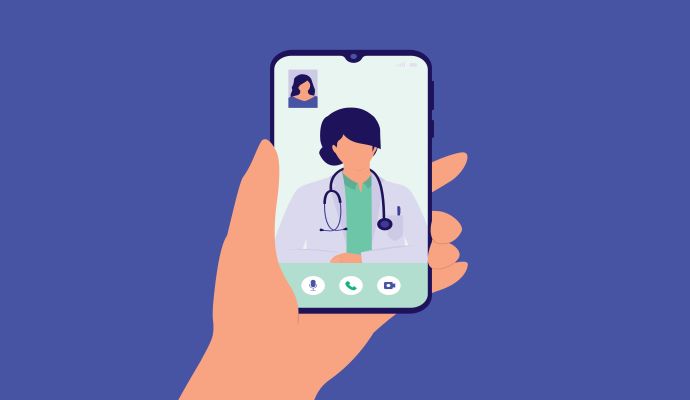11% of Telehealth Visits Result in In-Person Follow-Up for Same Reason
Behavioral health and chronic conditions are the primary diagnoses associated with in-person follow-ups for the same clinical reason after a telehealth visit.

Source: Getty Images
- While the majority of telehealth visits do not result in in-person follow-ups within a week, the fraction of virtual visits that do are for behavioral health and chronic condition issues, new research shows.
Conducted by market research firm Trilliant Health, the analysis aimed to examine the extent to which virtual care is disrupting the patient care journey. The researchers assessed data from the firm's national all-payer claims database. They determined the percentage of patients who utilized telehealth and had a follow-up visit in person for the same clinical reason within one week.
Between the second quarter of 2021 and the third quarter of 2022, 11.1 percent of telehealth visits led to an in-person follow-up for the same clinical reason within one week.
The primary diagnoses that led to in-person follow-ups after a virtual visit included reactions to severe stress and adjustment disorders, recurring major depressive disorders, pervasive developmental disorders, other anxiety disorders, opioid-related disorders, bipolar disorder, attention-deficit hyperactive disorder, and depressive episodes.
Other diagnoses that resulted in in-person follow-ups included suspected exposure to a communicable disease and type 2 diabetes.
The researchers further noted that telehealth is increasingly used to treat chronic conditions and behavioral health issues, which, as the data shows, require long-term management and care coordination among healthcare providers. Thus, as direct-to-consumer (DTC) telehealth services grow, it may lead to fragmentation of care.
"DTC telehealth providers like Amazon Clinic are limited in their ability to maintain an established relationship with the patient or provide any type of ongoing monitoring or treatment that does not result in a prescription," the report stated.
The researchers also stated that although DTC telehealth providers offer convenient care options, they create closed care models that cannot address certain healthcare needs.
"Business models rooted in maximizing transactions with individual consumers are seemingly ill-equipped to assist patients with chronic care needs, and yet DTC providers have no financial incentive to coordinate care that they cannot deliver," they wrote.
Thus, the researchers concluded that telehealth's benefits should be weighed against the waste they may produce when assessing virtual care strategies.
However, the jury still appears to be out on the question of waste, as other research shows that telehealth does not appear to drive duplicative care.
A study conducted by Epic Research earlier this year shows that most telehealth patients seeking specialty care did not require an in-person follow-up appointment in that specialty in the three months following the initial virtual visit.
The researchers analyzed 35 million telehealth visits between March 1, 2020, and May 31, 2022. They gathered the data from Cosmos, a HIPAA-defined dataset of organizations using the Epic EHR.
Further, the Epic Research study also shows that mental health and psychiatry had the largest telehealth usage rates of all the specialties studied but among the lowest rates of patients requiring in-person follow-up.
Similarly, another Epic Research study found that most primary care-related telehealth visits did not require an in-person follow-up within three months in the same primary care specialty. This study also involved an analysis of the Cosmos dataset, with researchers reviewing 18.6 million telehealth visits for primary care between March 1, 2020, and Oct. 15, 2022.
According to the study, 46 percent of pediatric primary care visits resulted in an in-person visit following a telehealth visit. In comparison, 37 percent of virtual internal medicine and 40 percent of virtual family medicine appointments required in-person follow-up visits.
